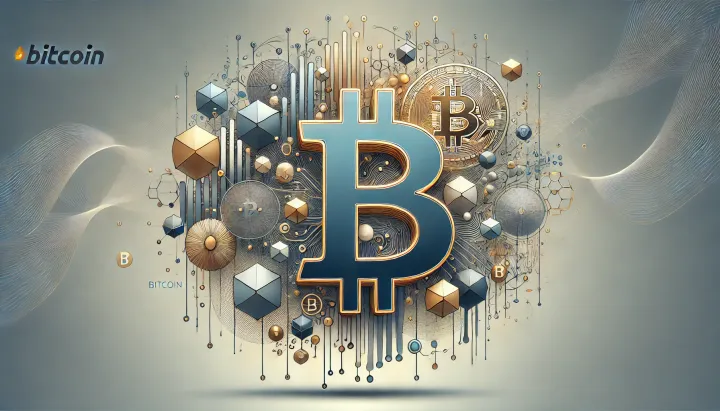Decentralized Solo Mining: Bitaxe & Innovation
The March 27, 2025 episode of the Robin Seyr Podcast with guest Skot explores how open-source Bitaxe devices enable solo mining with high block rewards while reinforcing Bitcoin’s decentralization.

- My 'briefing notes' summarize the content of podcast episodes; they do not reflect my own views.
- They contain (1) a summary of podcast content, (2) potential information gaps, and (3) some speculative views on wider Bitcoin implications.
- Pay attention to broadcast dates (I often summarize older episodes)
- Some episodes I summarize may be sponsored: don't trust, verify, if the information you are looking for is to be used for decision-making.
Summary
The March 27, 2025 episode of the Robin Seyr Podcast with guest Skot explores how open-source Bitaxe devices enable solo mining with high block rewards while reinforcing Bitcoin’s decentralization. The discussion details low-power efficiency, innovative hardware design, and the inherent risk–reward dynamics. These insights underscore significant implications for market competition and network resilience.
Take-Home Messages
- Decentralization Empowerment: Open-source Bitaxe mining fosters individual control and reinforces Bitcoin’s decentralized ethos.
- Cost Efficiency: Low-power Bitaxe devices minimize operational costs compared to traditional, high-power mining rigs.
- Innovation Catalyst: Community-driven hardware development accelerates customization and technological progress.
- Risk–Reward Dynamics: Solo mining offers the potential for high rewards despite its inherent uncertainty.
- Market Disruption: Transparent open-source practices challenge the dominance of proprietary mining systems.
Overview
Skot introduces the concept of solo Bitcoin mining using the Bitaxe Ultra, an open-source ASIC miner that secured a significant Bitcoin block reward. He explains how the device’s low power consumption—only 15 watts—makes it a cost-effective alternative to conventional mining hardware. The narrative emphasizes the core principles of decentralization and transparency in Bitcoin mining.
Skot contrasts solo mining with pooled approaches, noting that solo mining follows a lottery-style reward system. He details the trade-offs between full-reward control and the uncertainty of block discovery. This comparison is central to understanding the risk–reward dynamics discussed in the episode.
He also shares technical insights into the reverse engineering process behind Bitaxe development, highlighting both challenges and achievements. Skot credits his background in electronics and collaboration with a global community for the project’s progress. These details underscore the importance of grassroots innovation in disrupting traditional mining paradigms.
The broadcast concludes with reflections on the broader implications of open-source mining, including the need for better tracking and seller verification. The discussion links these issues to market scalability and the future sustainability of Bitcoin mining.
Stakeholder Perspectives
- Individual Miners: Value the autonomy and potential high rewards of solo mining with open-source hardware.
- Open-Source Community: Champion transparency, collaborative innovation, and decentralized development.
- Proprietary Mining Companies: May perceive the rise of Bitaxe as a competitive threat to established, centralized systems.
- Hardware Sellers: Face challenges in ensuring compliance with open-source standards and preventing fraud.
- Regulatory Bodies: Monitor the evolving mining ecosystem to balance innovation, market fairness, and security.
Implications and Future Outlook
The episode implies that embracing open-source mining hardware like Bitaxe can democratize access to Bitcoin mining and foster innovation. Enhanced transparency and community-driven improvements may drive down costs and diversify mining strategies. These developments could gradually erode the proprietary control prevalent in the industry.
Skot’s discussion suggests that effective tracking and verification mechanisms are critical for scaling decentralized mining operations. Improving these processes will bolster market confidence and operational reliability. Addressing these issues is vital for sustaining Bitcoin’s long-term network resilience.
The evolution of low-power, open-source miners may spur new business models and technological breakthroughs. Continued community collaboration is expected to accelerate hardware advancements and regulatory clarity. These trends will likely redefine market dynamics and encourage broader adoption of decentralized mining practices.
Information Gaps
- What factors influence the adoption rate of open-source Bitcoin mining hardware in decentralized networks? This question is critical because widespread adoption can drive technological innovation and enhance network decentralization. Understanding these factors will help shape policies and market strategies that promote transparency and efficiency.
- What methods can be implemented to reliably track the deployment and performance of open-source mining devices? Reliable tracking is fundamental for assessing operational effectiveness and scaling decentralized efforts. Addressing this gap will guide development strategies and regulatory oversight.
- How can the performance limitations of open-source ASIC miners be mitigated while maintaining decentralization? Balancing efficiency with open-source principles is essential for competitiveness against proprietary systems. This inquiry has broad implications for sustainability and technical progress in mining.
- What mechanisms can enhance the verification of sellers in decentralized open-source hardware markets? Strengthening seller verification is crucial to prevent fraud and build consumer trust. Improved verification mechanisms will support market integrity and responsible distribution.
- What innovative scaling solutions can be developed to address energy and market challenges in Bitcoin mining? Developing scalable, energy-efficient solutions is vital to maintain profitability amid competitive pressures. This research question carries interdisciplinary significance for technical, economic, and policy frameworks.
Broader Implications for Bitcoin
Decentralized Innovation
The open-source nature of Bitaxe encourages grassroots innovation, allowing individuals to experiment with and improve mining hardware. This democratization of technology can lead to unexpected breakthroughs and diversified mining approaches. As more participants enter the ecosystem, the collective ingenuity may drive transformative changes in Bitcoin mining.
Market Resilience
A shift toward decentralized, low-power mining solutions could reduce reliance on dominant proprietary systems. Enhanced competition and transparency may stabilize the market by mitigating monopolistic practices. Broader participation in mining also strengthens Bitcoin’s security and operational reliability over time.
Energy and Sustainability
Low-power Bitaxe devices introduce the possibility of more sustainable mining practices by significantly reducing energy consumption. This approach aligns with global trends toward environmental responsibility and efficient resource use. The integration of sustainable technologies in mining could reshape industry standards and support long-term environmental quality.



Comments ()